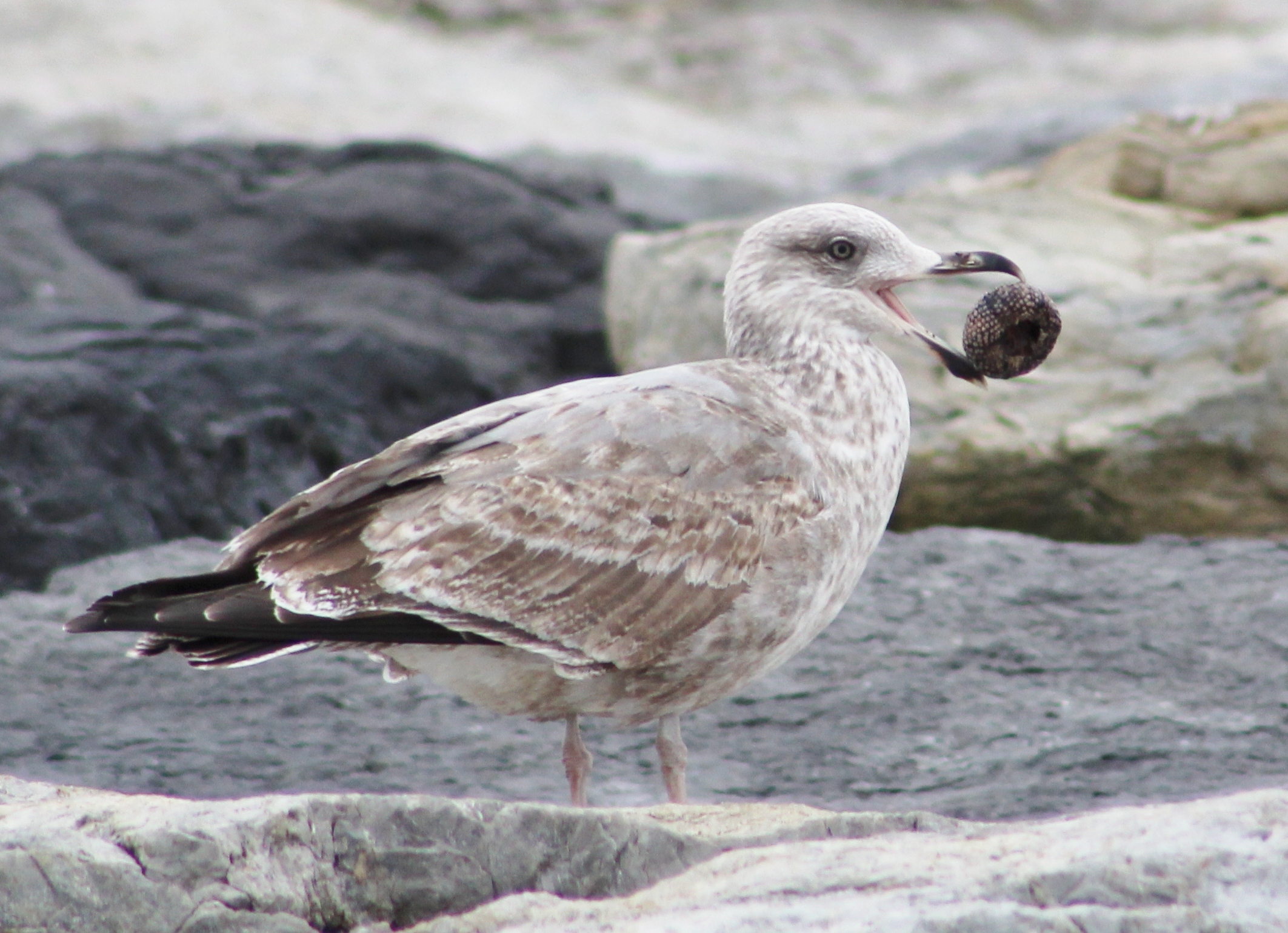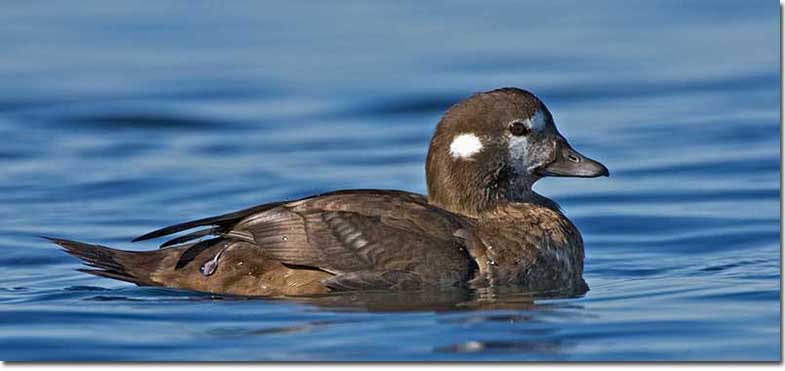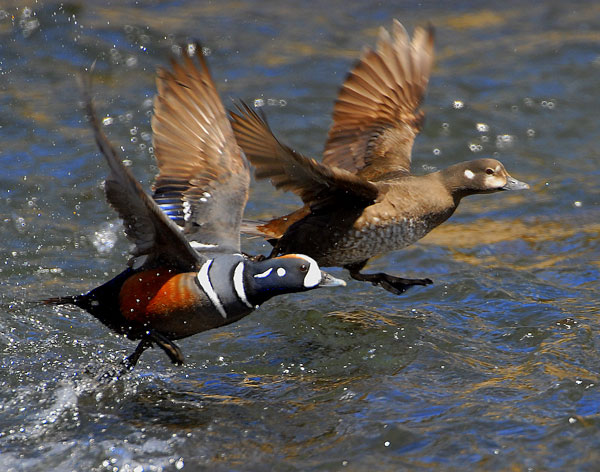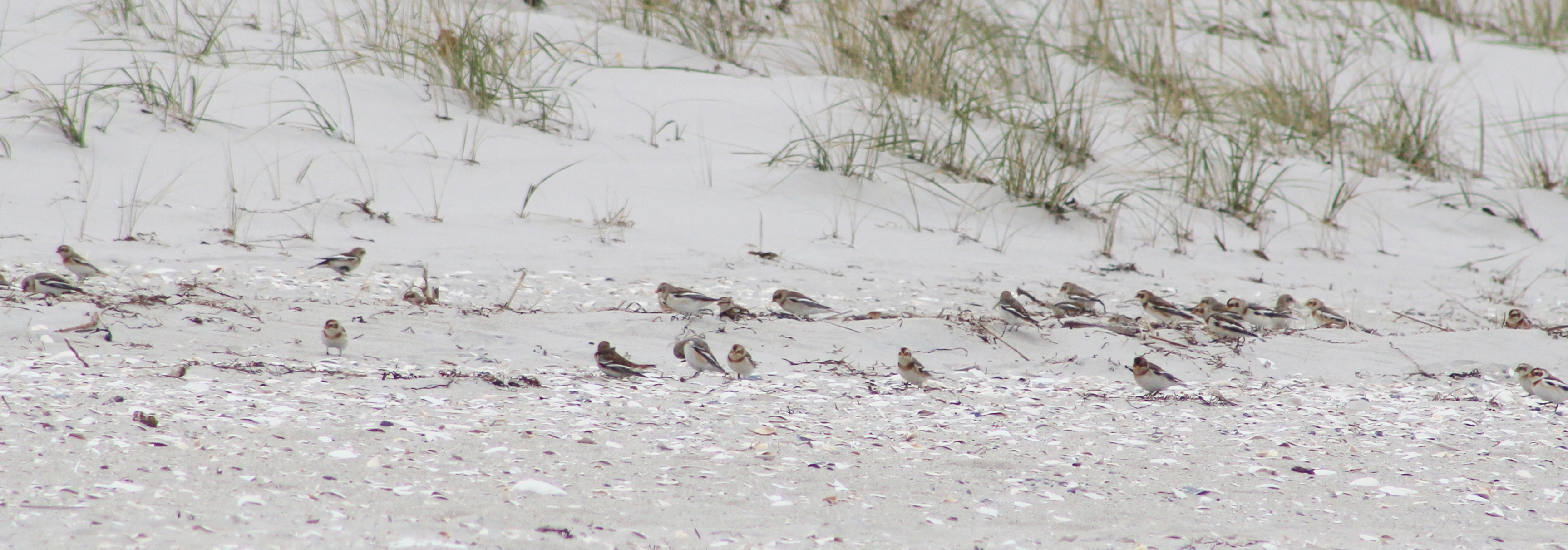Happy 4th of July! Here’s some red, white, and blue to celebrate the day!



Happy 4th of July! Here’s some red, white, and blue to celebrate the day!



Last year we had a Snowy Christmas Eve….Snowy Owl that is.

We went back to Long Beach Island today…no Snowies. Instead we celebrated Duck-mas Eve! All the waterfowl attended…
Surf Scoters,


Harlequin Ducks,

Long-tailed Ducks,

Black Scoters,

Brants,

And Common Eiders of all plumage types. There were breeding males, females, and juveniles.




There was even a Common Eider parade.
A Snowy Owl Christmas Eve is great, but Duck-mas Eve is just as awesome! Merry Duck-mas!
Dave and I took our first Barnegat Light trip of 2018 on Sunday, February 4. It was a chilly, windy, and overcast day. We left right before the afternoon rain started to fall, but we did see a decent amount of species.
On the jetty we came across this young gull with a sea urchin test. A test is a skeletal structure made of calcium carbonate. It contributes to the sea urchin’s five-fold symmetry and helps protect the internal organs. After a minute or two the gull dropped the test and flew away, since it turns out that it was already empty. As far as the gull itself, I’m going to venture and say 2nd winter Great Black-backed Gull, but I’m not 100% (don’t quote me on it, I’m still studying my gulls! They’re tricky to id lol).

Other birds found on the jetty included other Great Black-backed Gulls, Herring Gulls, Ruddy Turnstones, and Purple Sandpipers.
Dave took a few pictures of a Purple Sandpiper taking a bath on one of the rocks.
In Barnegat Inlet we watched Common Loons, Red-breasted Mergansers, Common Goldeneye, Common Eiders, and Harlequin Ducks float and feed.
On the beach there were a few American Crows and a small flock of Snow Buntings zipping around.


It was a nice way to start off our Barnegat Light trips for 2018.
Hi everyone! Sorry I didn’t post a Waterfowl Wednesday yesterday. One of my pets has been sick, so it’s been a rough week for me and I haven’t been getting much sleep. So I’m going to make up for it today with a post about the different kinds of ducks.
Ducks can be split into 3 major categories: dabblers, divers, and sea ducks. Knowing what category a duck species belongs to can tell you a lot about their lifestyle.
Dabbling Ducks feed by “tipping up”: submerging their heads underwater with their tails in the air. They sit high up on the water and have longer bills that help them filter food from the water’s surface. A dabbler’s feet are towards the middle of their body, making it easier for them to walk on land. They have a small hind toe. Since they have long wings, it’s easier for dabblers to take flight at a moment’s notice right off the surface of the water. They also have brightly-colored speculum feathers (a patch of secondary feathers located on their sides). Dabblers are typically found (but not restricted to) shallow waters and are omnivorous; eating aquatic vegetation, worms, and insects. Dabbling ducks are also capable of diving, but rarely do so. Examples of dabbling ducks include Mallards, Northern Shovelers, Wood Ducks, Green-winged Teals, Blue-winged Teals, Gadwalls, and Northern Pintails (to name a few).



Diving Ducks feed by submerging their whole bodies underwater. Their feet are larger and further back on their bodies, allowing divers to be strong swimmers underwater. They tend to sit lower on the water’s surface. Their hind toes has a large lobe. Their wings are shorter than dabbler’s wings, so diver have to run and furiously flap to become air-born from the water. A diver’s speculum feathers are duller than a dabbler’s. Divers and dabblers can be found in the same habitat, but divers prefer open waters or saltwater habitats. Divers kick their strong feet to obtain submerged prey and will eat clams, fish, invertebrates, and plant material. Examples of diving ducks include Canvasbacks, Scaups, Ring-necked Ducks, Ruddy Ducks, American Wigeons, and Redheads (to name a few).


Most people break ducks down into dabblers and divers, but you can go even further by breaking down divers into sea ducks. They generally live in marine habitats (mergansers tend to prefer riparian habitats). Many sea ducks have developed specialized glands so they can tolerate salt water. Their bills are also specialized and adapted to eat fish, mollusks, and crustaceans. Most sea ducks spend most of the year far north in Canada and Alaska, so they generally breed later than other kinds of ducks and raise their young in open waters. They are superb divers, and some can dive up to depths of 180 feet! Sea ducks include mergansers, eiders, smews, Harlequin Ducks, Long-tailed Ducks, goldeneyes, Buffleheads and scoters.



What’s your favorite kind of ducks? I’d love to hear about them in the comments. My favorite dabbler is the Wood Ducks, diver is the Ruddy Duck, and sea duck is the Hooded Merganser.
Hello friends! Happy Winter Solstice! Today is the return of Waterfowl Wednesday. Waterfowl Wednesday is a feature I started at the end of last winter to highlight some of the waterfowl visitors in my area. I love waterfowl, so I decided to write this feature again this winter. Waterfowl includes ducks, geese, and swans.
Our first bird of the season is the clown-like Harlequin Duck. I saw my first Harlequin almost two weeks ago, when Dave and I took a trip to Barnegat Lighthouse State Park.
Harlequin Duck (Histrionicus histrionicus)
Description:
Harlequin Ducks are medium-sized sea ducks. Like many other kinds of ducks, they exhibit sexual dimorphism, meaning males and females have different plumage. Male’s bodies are a slate blue with a large chestnut patches on their wing. They have white bands on their feathers, collar, and down the back of the neck that are bordered with black lines. On their face they have white crescent-shaped marks before their eyes and a white dot behind the eyes. Females are a duller gray-brown, with white patches around their eyes and a white dot behind the eyes. The male’s tail feather is longer than the female’s.

Range:
Summer (breeding): Pacific population: Northwest North America from Alaska south to Montana, Atlantic population: Baffin Island, Iceland, Greenland, parts of Quebec, Labrador, and Newfoundland. Winter: along the Pacific and Atlantic coasts
Habitat:
Summer: mountain streams, fast-flowing rocky rivers. Winter: salt water and rocky coastlines

Diet:
Harlequins are diving ducks, but may also dabble at the surface for food. Eats mollusks, fish, insects, and crustaceans.
Breeding/Nesting:
Harlequins start to breed at around 2 years old and form pairs in winter and spring. Many males my try to court one female by head-bobbing and tail-raising. Nests are shallow depressions in the ground that are lined with plant material The nests are placed near fast-moving water sources in forested areas.
Only females incubate the 5-7 eggs for about 27-30 days. When leaving the nest she will cover the eggs. Young are precocial, so they leave the nest fairly quickly after hatching. They are able to feed themselves and can dive, but usually dabble. Broods usually combine to be tended to by multiple females. First flights usually take place 5-6 weeks after hatching.
Sounds:
Call: a mouse-like squeak, because of this call they are sometimes refer to as the “sea mouse”. Females give a nasal eek-eek, males give a whistle tiv

Conservation:
Not much is know about populations, but the eastern populations has declined over the last centuries. More than half of the eastern population winters in coastal Maine.
Fun Facts:
Last Sunday was about 35 degrees, making it perfect weather to look for waterfowl. To find them, Dave and I decided that we should go to Barnegat Lighthouse State Park on Long Beach Island, NJ.
It seems that going to Barnegat Lighthouse SP in December has turned into somewhat of a tradition. This is the 3rd year in a row that we’ve made a December trip, but the difference this time: it was 35 degrees, not 75 degrees. Somehow it’s always really warm when we were able to go, so I was really excited about the cold, seasonal weather we were in for. The night before on one of my Facebook bird groups I saw that NJ Audubon took a trip to LBI on Saturday. They saw all sorts of waterfowl, Ruddy Turnstones, Purple Sandpipers, and more that day, so I was hoping that we would be lucky on our trip. Turns out we were.
We started our trek on the cement walkway right outside the lighthouse. This area is usually swarming with tourists, but thanks to the cold weather it was just us. This is where we got our first glimpse of Long-tailed Ducks. Long-tailed Ducks spend their summers breeding in the Arctic and spend the winter all along the Pacific and Atlantic Coasts of North America. We get to see them in their winter plumage. Males are striking with a mix of white, black, and gray and a pink spot on the tip of the bill. Females are duller, but stockier with a thick bill. And of course, they have distinctive long tails that stand out even from a far distance. Unfortunately they were too far away for us to get any pictures, but they were cool to see. Life list addition #1 for the day.
From the cement walkway you can walk onto the jetty. The jetty stretches all the way down to the south end of the beach and out into the ocean. During the summer it’s covered with fishermen, but today it was covering in Ring-billed and Herring Gulls. While standing on the rocks were were able to watch gulls flying out over the ocean as well as Double-crested Cormorants, Brants and Common Loons bobbing in the water.

Usually in December we see Ruddy Turnstones hanging out on the jetty but instead we had a surprise guest: a Merlin. Merlins are small falcons, not much larger than American Kestrels. They usually spend time in open woodland, so I certainly wasn’t expecting to see on at the beach (although according to e-bird you can find them in this location). We watched him for a bit before he flew off. We decided to get off the jetty and walk down to the southern tip of the beach.

The south end of the beach is usually where we see different kinds of gulls wading around. We did see many Herring and Ring-billed Gulls on the way, but there was also a small flock of Ruddy Ducks floating around. The tide seemed lower in this area, and there was a smaller jetty leading out into the ocean that we normally don’t see.
That’s when we hit the jackpot. Everything we were looking for that NJ Audubon mentioned was in this location. There were Harlequin Ducks (Life List #2), Common Eiders (Life List #3), Ruddy Turnstones, Purple Sandpipers (Life List #4), Dunlins, and a Black Scoter (Life List #5). They were all scattered around the area; swimming, diving, walking around the rocks. There were different kinds of gulls and Ruddy Ducks mixed in too. Every December I go to this location looking for these species but usually don’t see them since it’s always unseasonably warm when we’re able to go. But this day was special, and am so happy I was able to experience some of these winter species for the first time.
The excitement wasn’t over however. The Merlin reappeared on the jetty and we were able to sneak our way a little closer to see him before he flew off. We also observed a flock of Snow Buntings. I only ever saw one Snow Bunting before. We were at Amico Island at the end of October last year, and there was a single bunting in a field. I didn’t know what it was at the time and didn’t have a camera, so it remained a mystery until I saw a picture of one a month later. When I went to add it to my checklist, E-bird didn’t believe me! But this time I was positive, and was getting to see a flock of about 80. They flew around erratically, landing for a second before taking flight again. They were extremely hard to follow, so my pictures turned out pretty badly, but they were awesome to see. (Below is the best picture I was able to get, still pretty bad, but at least you can see their colors).

The annual December Long Beach Island birding trip was a success, with 5 new birds added to our Life List. I’m excited to see more winter visitors over the next few months. What’s the most exciting winter bird you’ve seen so far? Tell me about it in the comments.